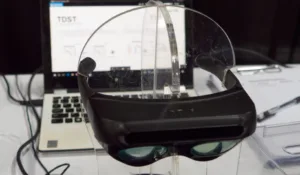Analogix was in the South Hall at the show and was highlighting that its DisplayPort/SlimPort chips are being used in the Microsoft Mixed Reality reference design. The chips have signal conditioning so that the chips work better on long cables than some other solutions. In VR, there are often longer cables from the PC to the headset, so the chips have been adopted by all the companies making Microsoft Mixed Reality headsets.
AntVR attended the CES Unveiled evening event for journalists. The company, from China, showed its latest headset, which uses a fast (300Hz) time division multiplexing method that it calls TDST to switch the view for the user between an integrated display in the headset, reflected via a modulated beam splitter and the real world.
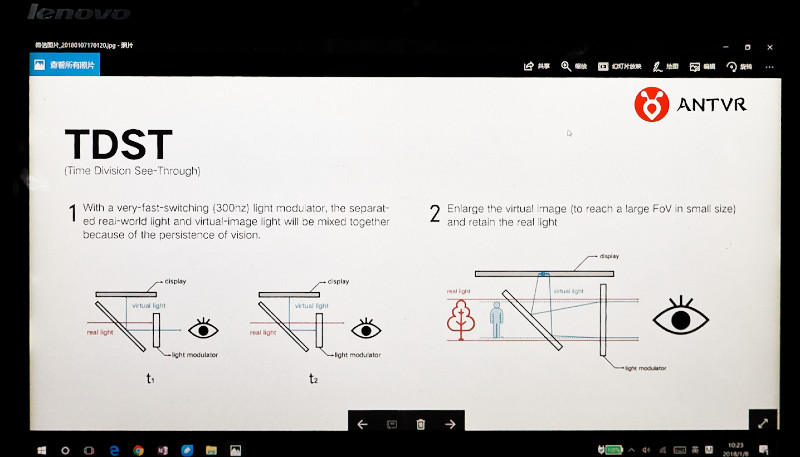 The AntVR method uses high speed switching between the display and the ‘real world’ view. Image:Meko
The AntVR method uses high speed switching between the display and the ‘real world’ view. Image:Meko
The AntVR headset Image:Meko
Bebop Sensors was showing its VRGlove in the Eureka Park in the Venetian. The glove not only has sensors in the flexible fabric fingerpockets, but also has some haptics to give some feedback to the user. We tried it and the haptic effect was designed to be liking rubbing a rough surface, but we didn’t quite make that connection! Nevertheless, the system is interesting and is intended for B2B applications. Bebop is looking to license the technology to companies for professional use and it feels that gloves could be made for around $100 to $150 each. The sensors work at 120Hz and the firm told us that unlike the Magic Leap, it could work as a proper trigger, which is a problem for Magic Leap, it said.
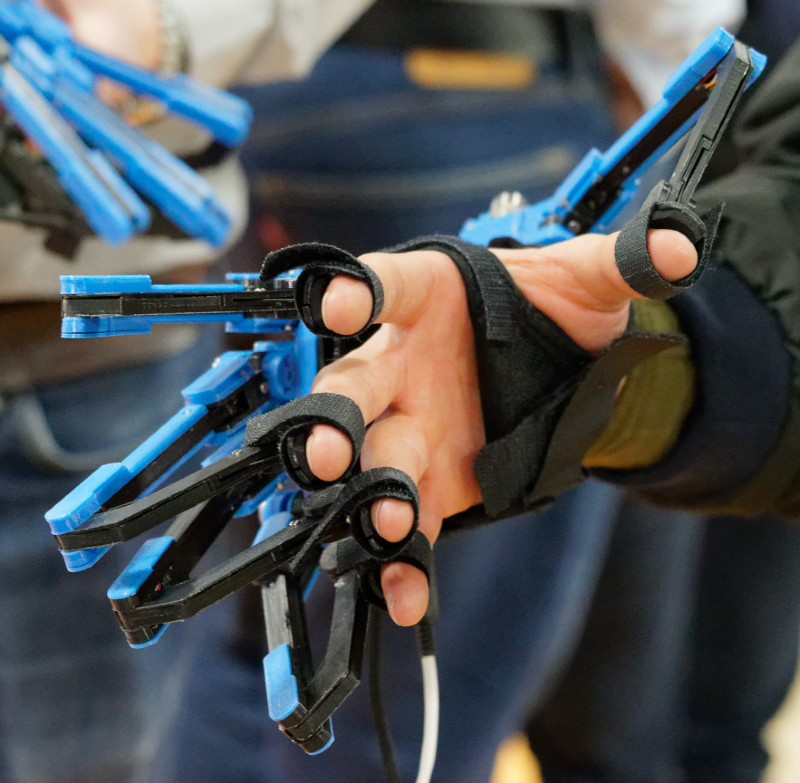 The Bebop VR glove supplies haptic feedback and is expected to be used in industrial applications. Image:Meko
The Bebop VR glove supplies haptic feedback and is expected to be used in industrial applications. Image:Meko
Casio was showing a new smartwatch that had a very unusual display that consists of a transparent monochrome LCD with a colour LCD behind. This allows time display with very long battery life, but also allows the use of the watch for GPS and other applications where colour really adds value.
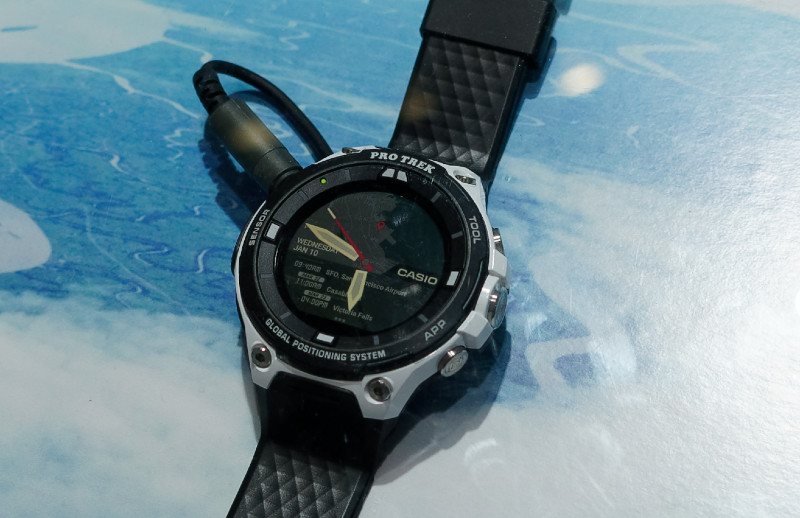 Casio had a Dual Layer Watch using a transparent mono and colour LCD. Image:Meko
Casio had a Dual Layer Watch using a transparent mono and colour LCD. Image:Meko
Dynamics Inc won an Innovation Award for its Wallet Card, which has a certified network core and can hold the details of multiple credit cards. The Wallet Card has an integrated display that can show the logo of the card being used. The card works in magstripe, EMV and contactless situations.
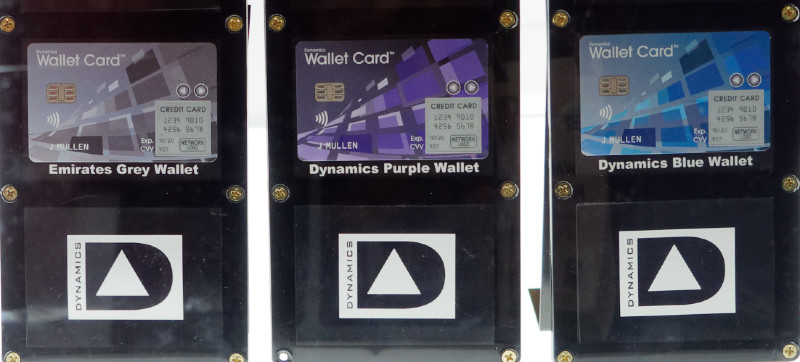 The Wallet Card can replace a number of cards. Image:Meko
The Wallet Card can replace a number of cards. Image:Meko
Goertek had a suite in the Venetian. The company is the biggest supplier of VR headsets and had examples of headsets from a range of its clients. One was a headset from Pico and although the firm said that this was ‘secret’, it publicly showed a Pico headset at Laval Virtual last year, so it wasn’t news to us! (Goertek Tries Laval for the First Time). The company is working with device makers such as Kopin. (
Hap2U was at the CES Unveiled event. The company is from France and is a tech start-up that has a haptic driving system based on Piezo technology, but that is very thin – it can be a 2 micron film, the company told us. Others can also add haptics, but the firm believes that nobody else is as thin. The film uses around 50V to drive and takes around 500mW when in operation, depending on the size of the surface. As with other haptic solutions, different textures can be simulated by changing the driving algorithms. At the moment, the company is using discrete components for driving but is looking to collaborate with companies that are interested in developing driver semiconductors.
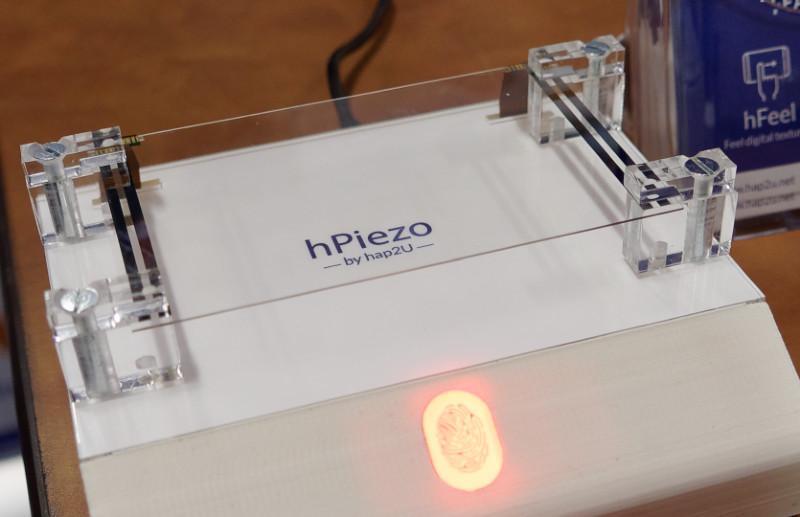 Hap2U’s Haptic technology is based on a thin film
Hap2U’s Haptic technology is based on a thin film
Hudway is selling aftermarket HUDs and was in the Eureka park at the show.. The device uses a special app and and the display in a smartphone to create the image. It costs $299.
 Hudway showed its device which relies on a smartphone display. Image:Meko
Hudway showed its device which relies on a smartphone display. Image:Meko
LetinAR was in the Sands Eureka Park and was showing the technology that it previewed before the show. (LetinAR Claims Light Optics for AR) The company was showing its pinmirror lenses which definitely did seem to provide the wide field of view that it claimed (70º from an array of mirrors – each one supports up to 15º, with wider support under development). The optical method is independent of the resolution of the display used and the company said that it can support 4K displays.
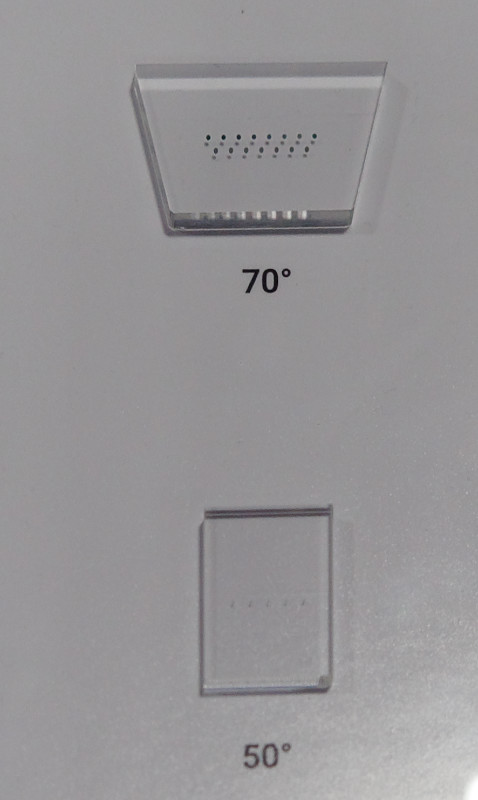 You can see the ‘pin mirrors’ embedded in the lenses that LetinAR showed. Image:Meko
You can see the ‘pin mirrors’ embedded in the lenses that LetinAR showed. Image:Meko
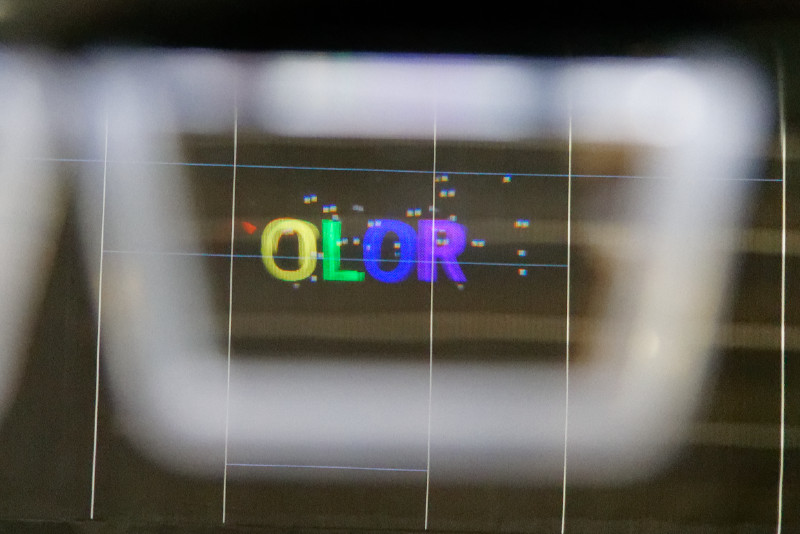 The LetinAR display was hard to photograph, but this image came out quite well. Image:Meko
The LetinAR display was hard to photograph, but this image came out quite well. Image:Meko
We reported on the narrow pitch (it called them MicroLED) 139″ UltraHD display shown by Lumens of Korea in our TV report, but the company was also showing a couple of genuine microdisplays including a monolithic microdisplay for HUD use that produces 100,000 cd/m² with 1280 x 720 HD resolution from the chip. The company also expects application in VR and AR as well as video walls. The company plans to be in mass production by March.
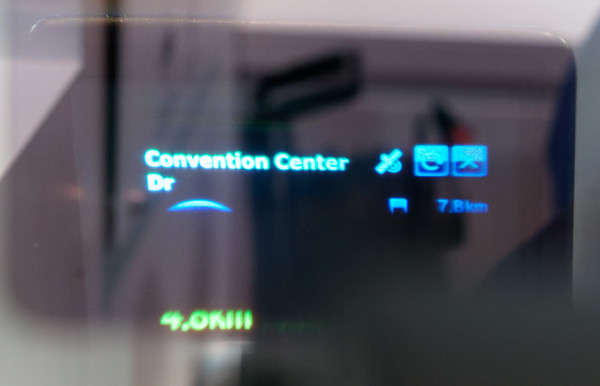 This is the best image we could get of the Lumens HUD display – it’s always a challenge! Image:Meko
This is the best image we could get of the Lumens HUD display – it’s always a challenge! Image:Meko
We have reported on the Miraxess notebook shell several times since CES 2017 (Miraxess Launches Indigogo Campaign). The company was in the Eureka zone and told us that it is now getting close to shipping its shells which will cost $249 for pre-orders and $299 after launch. The first shipment is currently pencilled for March. We remain sure that there is a market for this kind of product, but see $299 as still too expensive (although we understand that’s a chicken & egg problem).
 Miraxess is getting close to shipping its clamshell add-on. Image:Meko
Miraxess is getting close to shipping its clamshell add-on. Image:Meko
In the Innovation Awards area, Namsung was showing the NavAtlas Smart Mirror Command Center which has an 8.1″ 1600 x 480 resolution touch display and supports offroad navigation and front and rear camera recording. It’s IP 66 rated and has the NA81MDVR model designation.
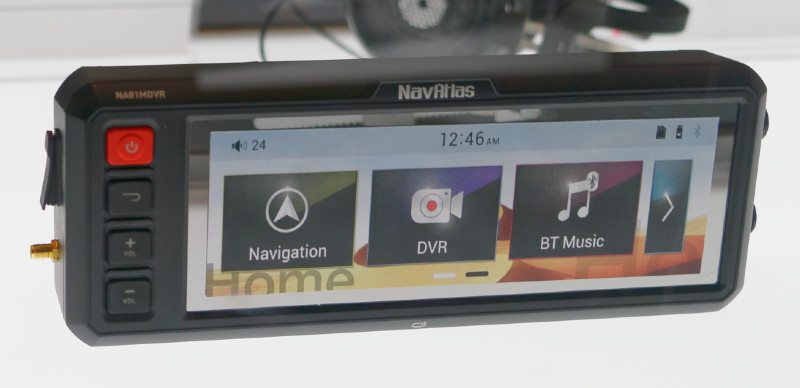 Namsung’s Smart Mirror is for rugged and off-road use. Image:Meko
Namsung’s Smart Mirror is for rugged and off-road use. Image:Meko
Peraso has been developing chips to support the 60GHz band used by WiGig and Wi-Fi 802.11ad. The company has several opportunities and it showed us the latest reference design for its USB dongle to enable 802.11ad. 802.11ad has been slow to roll out, but the Asus Zen Pro4 has WiGig integrated and with the advent of gigabit LTE in countries such as Italy, there is increasing logic to having a high speed wireless connection to a smartphone.
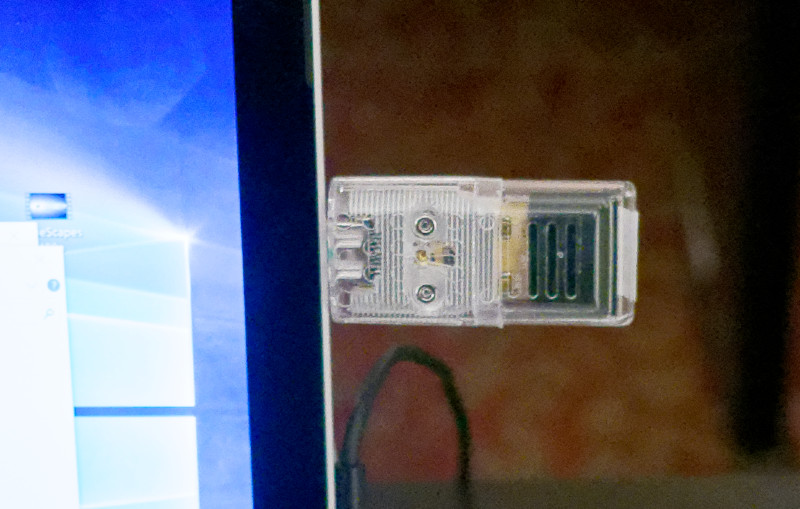 Peraso’s 802.11ad dongle reference design. Image:Meko
Peraso’s 802.11ad dongle reference design. Image:Meko
The company also has a system for wireless backhaul in professional applications and it has developed an access point that can support 10 Gbps using a multi-segment approach. 60GHz is directional, so three separate transmitters can be used to support 360º operation. It is working with companies including IgniteNet which is using Peraso technology in system solutions and that company has the MetroLinq 10G Tri-Band Omni system.
As well as these networking applications, Peraso is working on 60GHz for VR and it has developed an RF and baseband solution that it is able to show to OEMs or to those wishing to offer wireless add-ons for existing headsets. The technology will support up to 2K x 1K on each eye at appropriate frame rates.
Pico launched its new flagship device, the Pico Neo, an all-in-one VR headset that includes head tracking technology (the first to offer six-degrees of freedom, 6DoF for head + controllers to implement full motion). This is a game console class VR headset that is stand-alone, leveraging the “ultrasonic” controller that helps augment the virtual reality experience making it fully immersive (no wires, attached computer or smartphone.) It will cost $750 with pre-orders taken now, shipping dates TBD.
The Pico Neo device includes a pair of 3.5 x 2″ LCD’s (1440 x 1600 pixel resolution) with a 90Hz refresh rate. The device is powered by a Qualcomm Snapdragon 835 series microprocessor with 4Gb RAM and SD support for up to 128Gb. The all in one also boasts an AM3D rendering engine.
Announced just prior to E3 in June 2017 Pico Goblin costs $269 and is on sale now. It hosts a 5.5″ TFT LCD (2560×1440 resolution), offering a 90-degree field of view and self-adaptive pupil distance. The company boasts three degrees of freedom (3DoF head tracking technology), supports head tracking in VR, but no motion. Goblin is built around a Qualcomm Snapdragon 820 CPU with 3G high-speed LPDDR4-1,866 RAM and 16G eMMC 5.1 ROM storage capacity. Goertek makes the headsets for Pico, it told us last year, at Laval Virtual.
QD Laser had an eyewear system based on laser scanning at CES Unveiled, where the image is projected directly onto the retina. The system has been promoted in the past by Fujitsu under the Retissa brand and QD Laser is a J/V between Fujitsu and Mitsui Ventures. The laser is very low power, of course, to meet regulatory requirements. The headset refreshes at 60Hz and the company said that it sells for aroun $5,000 to $6,000 with a target market being clinical and medical use.

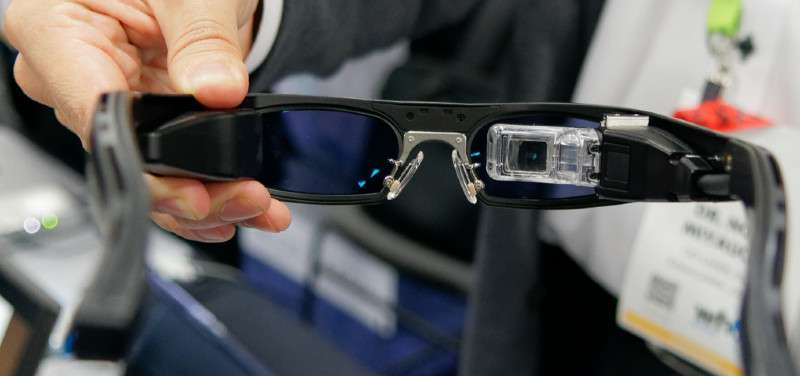 The QD Vision AR glasses have 720p resolution. Image:Meko
The QD Vision AR glasses have 720p resolution. Image:Meko
RealMax of Shanghai, China has showing a new Qian headset for A/R that has a 1080P display and a 100º field of view. The headset has 6 DOF sensors and is built around a Snapdragon 820 chip while it weighs 450 gms. It is designed to be usable with prescription glasses. The company has its own SDK for support of development. At the moment, the headset is a prototype with expectations of a Q3 release. As it happens, one of our writers that was not at the show picked up the story, so there are more details here. (Realmax Qian AR Glasses Debut at CES)
 The RealMax Qian Headset is a prototype and production is planned for Q3. Image:Meko
The RealMax Qian Headset is a prototype and production is planned for Q3. Image:Meko
Samsung Sgnl is a spin-out from Samsung that uses a wrist-mounted transducer to transmit audio via the bones of the user. By putting the finger in the ear, audio can be heard by the user, but not by others. We couldn’t resist the chance to try it and found that it worked surprisingly well, with clear audio. The technique has the advantage that pressing the finger firmly into the ear works well at blocking ambient sound quite effectively.
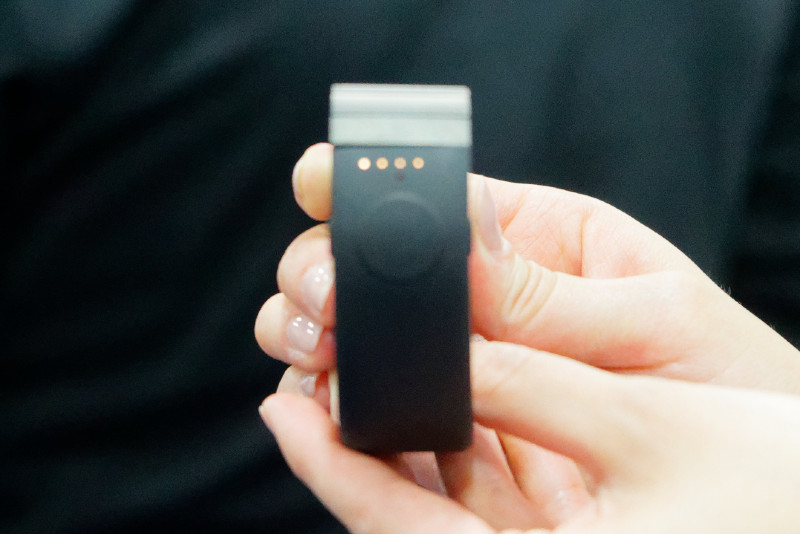 The Samsung Sgnl (apologies, the focus is not spot on!). Image:Meko
The Samsung Sgnl (apologies, the focus is not spot on!). Image:Meko
Synaptics was at CES with its latest touch and display drivers. The first product we looked at was the new ClearID sensor which is a fingerprint sensor that uses optics and can sit behind a transparent OLED to allow fingerprint detection on an area of the display. The sensor is in mass production. The company is also developing its integrated display/touch drivers to support the trend to thinner bezels, which is difficult if you want to have a separate driver.
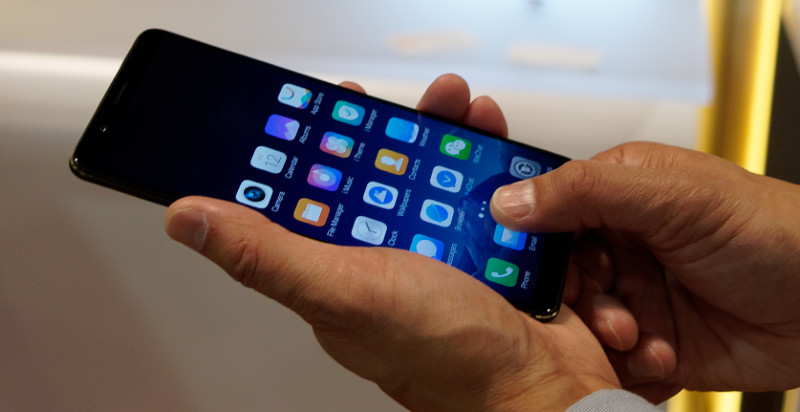 Synaptics has a touch sensor that can be used under an OLED. Image:Meko
Synaptics has a touch sensor that can be used under an OLED. Image:Meko
The other trend is to rounded corners and Synaptics has developed touch algorithms that can cope with both the rounded corners, but also the kind of notch support where there is a gap in the display to allow for cameras, as on the iPhone X. The company is also working on force detection using its integrated drivers and was showing force detection with 1-3 levels. Another feature that it can implement is ‘touch on edge’, even if there is not a sensor under the edge. The company has also developed its integrated touch and display drivers to support OLED as well as LCD and it can also support the kind of sub-pixel rendering that is used in the Pentile configuration used by Samsung.
In large displays, Synaptix was showing a display developed with Displax that allowed a four chips plus CPU solution. The system has three receivers and on transmitter and can detect up to forty touch points.
TiledMedia is a Dutch company that was in the Venetian’s Eureka Park. The company told us that it has a special compression scheme for 360º and other video that optimises the compression to just send the portions of the video that are relevant to the users’ viewport. “Ah!”, we said? “How does that differ from what the Fraunhofer is doing in this area?”. The company gave us a detailed breakdown of the differences, but the core is that the Fraunhofer technology was used for the first phase MPEG standard, but TiledMedia is being considered for the next one. The key reason is that the company’s compression scheme is very low latency – typically just 1 to 2 frames, but can achieve a big reduction in the bitrates needed for 360º video. The company has technology for Stereo 3D, as well. The technology won an award from the Advanced Imaging Society for its technology.
 TiledMedia won this award for its VR video compression technology. Image:TiledMedia
TiledMedia won this award for its VR video compression technology. Image:TiledMedia

